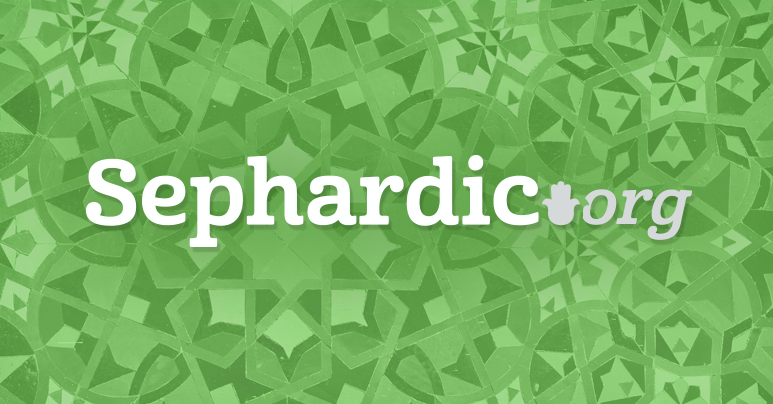
Burning Ketoret from the Coals of Fig Wood
Set in between Shemini and Ahare Mot which narrate the death of the sons of Aharon are parashiot Tazria and Mesora which are focused on the results of the sin and Tikun of lashon hara. The relationship between לשון הרע and צרעת is confirmed in the Talmud (Arakhin 15) - "Whoever speaks LH is visited with צרעת - afflictions - Based on the commentary of the Hatam Sofer - R. B. Rosenblum suggests that the blemish and attempted rectification of נדב ואביהו was associated with this sin as well.
While our Rabbi's have suggested up to a dozen possible infractions - the Torah in 10:2 writes that it was an אש זרה - a foreign fire that caused their demise. This infraction writes the Hatam Sofer is clearly distinct from the the Torah's warning found in Shemot 30:9 not to bring a קטרת זרה - a foreign incense.
Why Did Nadab and Abihu Offer the Ketoret?
We shall continue with the approach to the narrative according to the חתם סופר - (sermons) - The Midrash (VR 20:10) teaches that Nadav and Avihu would walk behind Moshe and Aharon saying "when will these two elders pass away (to usher in a new era)? When will we become the new leaders? This represented on their exalted level - לשון הרע בחשאי - LH said in private.
The Talmud in three places (Arakhin 16; Zevahim 87; Yoma 44) teaches that the ketoret was a rectification for specifically this type of LH. The ketoret was burned on the inner altar twice daily. On this particular day they brought the ketoret that accompanied the Korbanot ofנחשון of the tribe of Yehuda as an additional offering. This was an opportunity - They would rectify the sin of LH via a perfectly acceptable ketoret.
A Strange Fire
The Hatam Sofer asserts that the fire used by נדב ואביהו was considered זרה due the fact that the קטרת offering had not been burned with גחלים - coals that specifically came from the incense pyre located four amot from the southwest corner of the מזבח - It was mistakenly taken from an alternative pyre or fire.
According to R. Yose (Zev 58) there were three pyres located on the מזבח - The first large pyre that was erected on the altar was that upon which the offerings were burned; The second was an incense pyre; the third being a pyre that was built upon the altar to insure (Yoma 45) that there would be a continuous fire upon the מזבח - The second Pyre from whose coals were used for the burning of the - קטרת - occupied a distinct position on the מזבח that was closest (Zev 58) to the inner altar upon which the קטרת was offered.
This was to satisfy the biblical rule that the coals had to be taken from the pyre לפני ה׳ - Since the coals in the קטרת offering of Aharon's sons were not taken from the prescribed pyre - the fire was considered זרה - In order to gain some insight into the severity of this mishap we need to learn the nature of these coals.
The Talmud (Zevahim 58) cites the Mishna in Tamid (29) that they would select from the storehouses of wood in the Temple - fine pieces of the fig tree - Rashi notes that this was the preferred wood - with the intent to serve as a remedy of the situation of Adam and Eve - (Ber 3:7) who sewed together fig leaves for clothing after their sin of consuming from the Es HaDaat.
If the קטרת would have been burned properly using the prescribed coals and pyre - it would have rectified the לשון הרע spoken in private. Since an alternate fire was used - it acted to consume נדב ואביהו instead.
The Serpent - Lashon Hara and Sara'at
Our Rabbi's teach that it was the נחש who initiated and unleashed the negative effects of לשון הרע into the worlds. He essentially told חוה that if she consumes from the עץ הדעת - she will know good and evil - The reason why she was refrained from consuming from it was that God did not want any competition in this knowledge.
This slander against the Creator resulted in the נחש being infected permanently with צרעת - Hence we are warned that slander and speaking evil is associated with the venom inserted into creation via the serpent. Tehillim 140:4 שננו לשונם כמו נחש - They have sharpened their tongue like a serpent. The Talmud (Ber 40 and San 70) cites the view that the tree of knowledge was of a תאנה or that of fig wood.
It is apparent that our Rabbi's sought to eradicate not only an individuals sin of לשון הרע - but also its roots associated with the consumption of figs. The fig wood would now be completely burned into coals to be used and elevated by the incense offering on the inner altar. It was absolutely necessary that these coals come exclusively from the fire pyre that stood לפני ה׳ - If not - instead of the fig wood being consumed - It would be the Holy Ones בקרבי אקדש -who would have to take its place - This is what apparently occurred as fire consumed נדב ואביהו to act as an alternative Tikun in place of fig wood associated with the עץ הדעת.
Corrective Measures for Lashon Hara
We have learned that a method of rooting out the effects of לשון הרע - initially instigated by the נחש at the עץ הדעת - was via the burning of the fig trees into the coals of the קטרת - Along this pathway the Talmud (Arakhin 15) offers corrective measures or remedies to avoid engaging in לשון הרע - The sons of R. Hanina offer two respective approaches to this effect - depending on the spiritual level of the individual.
It appears to me that both suggestions are associated with an attempt to correct the sin at its root - Namely to nullify the effects of the accepted לשון הרע of the serpent causing us to improperly attach ourselves to the רע aspect of the עץ הדעת טוב ורע - The first advice is directed to the תלמיד חכם - Torah scholar.
According to R. Hayyim Shaul Dweck Hakohen - (the teacher of our Rabbi Y. Kassin) in his איפה שלמה - this appellation is reserved for one who includes in his studies חכמה or the Torah's secrets. It is he who must engage in Torah study - in order to ascend and cure the effects or roots of LH and attach to the higher tree or the עץ החיים - as the verse in משלי informs 15:4 מרפא לשון עץ חיים - The cure of a tongue is the tree of life - Alternatively if he is an עם הארץ and cannot ascend to the lofty level - he can still rid himself from the negative effects of the עץ הדעת רע - by breaking his spirit or Daat - in the Talmudic code it is specifically termed ישפיל דעתו - Through humbling himself he can subdue the negative effects of דעת that was injected in creation by the consumption of the Es Hadaat.
Hashem's Fire Consumes the Sons of Aharon - The Highest Tikun of LH
While admittedly the matter remains obscure - it is clear that our Sages and even possibly the Torah viewed the death of נדב ואביהו- as an atonement for Israel. The Torah enjoins us כל בית ישראל יבכו את השרפה אשר שרף ה׳ - Evidently this fire which came forth from the קדש קדשים - is associated with the divine attribute of mercy - as the name employed is YHVH. In this context we can possibly view the occurrence as a forced mishap.
Every year we are commanded to cry regarding this שרפה following תפלת שחריתon Yom Kippour - We might want to view the episode in the following terms. נדב ואביהו - offered their souls so to say to be consumed on behalf of Israel as atonement for not only the sin of Adam and Havah but also for those associated with Israel.
They or ה׳ opted to use their souls in elevation of the ketoret offered instead of fig wood coals. This apparently was so effective in Israel gaining atonement that it would cement its place in the annual liturgy of יום כפור - This might be conditioned upon our proper meditative thoughts while crying that they were consumed on our behalf.
In conclusion, it might be considered as the most effective method to be protected from the effects of לשון הרע injected into creation. Even beyond the burning fig tree coals of the ketoret; the attachment of the scholar to the tree of life; the releasing of the negative effects of the Daat from the mind of the unlearned one. We must consider this annual opportunity and take heed to the admonishing words of the poet - חרוד לבי חרוד ושפך דמעות על חסידי עליון - Tremble my heart a great trembling - pour forth tears considering these elevated pious ones.








